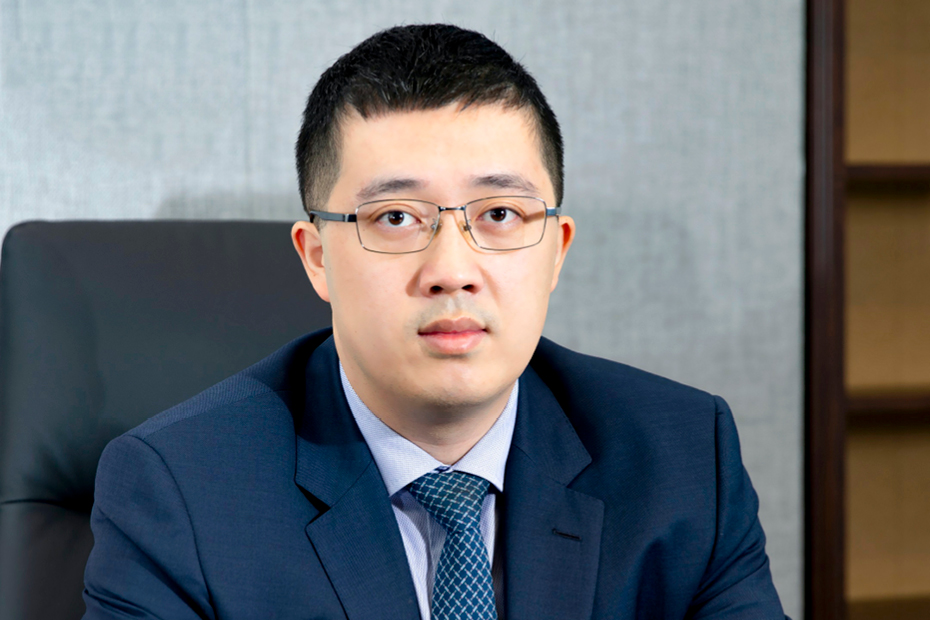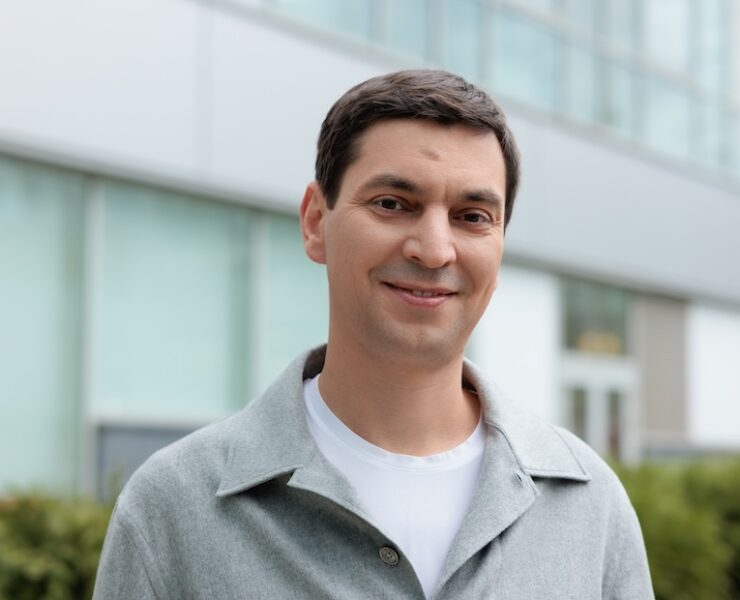Here’s how digitisation can support UAE’s non-oil economy
The widespread adoption of technologies such as cloud computing, big data, AI and 5G makes it easier to discover potential data value and improve efficiency

The UAE government is taking concrete steps to establish a strong digital economy and use the advantages and benefits of digital transformation. The UAE digital economy contributes 4.3 per cent to the GDP. What is your advice for accelerating the digital economy? What are the digital economy enablers?
The recent announcement of the UAE Digital Economy Strategy is a significant step in this direction. The Strategy recognises that information, data and technology are today the primary sources and stores of value. The UAE already has the foundation for the digital economy, boasting one of the world’s deepest FTTH (fibre to the home) penetration rates, reaching 95.7 per cent of homes across the UAE. Meanwhile, local carriers were among the first to roll out 5G, a sector where Huawei has proudly played a key role. UAE’s national policies also favour an open and competitive ICT marketplace and have allowed various players to thrive. By allowing international standards to guide technology evolution, UAE enterprises and consumers, in turn, benefit from the best technologies the world has to offer. Moving forward, a flexible regulatory regiment should be maintained for adapting dynamically to the rapid changes in the digital sphere in the UAE. From an enabler perspective, 5G also sees large-scale commercial deployment and continuously creates business value, playing a dominant role in enabling a future-stimulated digital economy.
According to ‘The Connectivity Index’ issued by Carphone Warehouse in 2021, the UAE achieved first place amongst the Arab countries and the third position globally in launching and deploying 5G networks. As an active global player in 5G networks deployment, how do you see the future of 5G networks in UAE and globally? What value does 5G carry still hold?
The UAE has embraced 5G to digitally transform vertical industries, enhance productivity and open new opportunities. That focus is paying significant dividends as more businesses go digital. New 5G ecosystems have been built while original 5G-powered applications have been introduced to local industries. For example, HD video, remote working, and online education supported the country’s economy during the pandemic and continue to define how we work and live. Huawei is a proud partner to the nation’s two carriers, the government and private sector organisations in their digitisation journeys. We continue to innovate in the space by integrating digital technologies with industry scenarios, working with partners to create value for customers and build a prosperous ecosystem. The focus of 5G is shifting to vertical industries, or 5GtoB. The Middle East region is currently leading in applying 5GtoB solutions in the oil and gas industry, and Huawei, in return, is moving towards large-scale replication of these solutions, supporting more than 3,000 digital transformation projects in eight different sectors.
How can digitisation and ICT support the UAE’s non-oil economy and improve the operations and efficiency of the oil and gas sector in the country?
The widespread adoption of technologies such as cloud computing, big data, AI and 5G in the energy sector makes it easier to discover potential data value and improve the E2E efficiency of oil companies in oil exploration, development, production, storage, transportation, refining, and sales. It can help quickly and accurately process seismic data, identify oil and gas reservoirs and diagnose the working conditions of pumping wells.
In the long-term, the UAE is in the middle of a switch from oil and gas-based power generation to green energy as envisioned in the “Energy Strategy 2050”, which aims to increase the contribution of clean energy in the total energy mix from 25 per cent to 50 per cent by 2050 and reduce the carbon footprint of power generation by 70 per cent. The core of carbon neutrality is low carbon at the production end, electrification at the consumption end, and intelligence at the management end. Huawei is working with regional partners to increase the proportion of electricity generated from green energy, improve the power consumption efficiency of various sectors, support the development of green energy, and achieve energy conservation, emission reduction, and OPEX savings.
Huawei launched a new business unit to support national decarbonisation goals. Huawei Digital Power looks at five areas of business globally: Smart PV, data center facilities, mPower for electric vehicles, site power, and integrated energy solutions.
What is Huawei doing in terms of cloud innovation and implementation?
Over the past few years, Huawei has made significant progress in developing its cloud ecosystem. Currently, Huawei Cloud has 27 regions worldwide, providing over 220 cloud services and 210 solutions for more than 170 countries and collaborates with more than 28,000 partners to contribute to digital transformation. Looking ahead, Huawei Cloud will continue to expand the global data center and network layout and is committed to providing customers, partners, and developers with one global network with a reliable experience.
Our Middle East cloud strategy is to bring services closer to our customers. We launched the Abu Dhabi cloud region in 2020, followed by an announcement this year of a Saudi Arabia region to be launched soon. Then in July of this year, Kuwait’s Communication and Information Technology Regulatory Authority (CITRA) granted permission to Huawei Cloud to offer cloud services in Kuwait, as the GCC country pursues a cloud-first policy.
Also, with Huawei Cloud as the foundation, Huawei aims to provide “Everything as a Service,” turning infrastructure, technology, and expertise into cloud-based services and making cloud migration easier for customers in different industries. Huawei is also building integrated teams focusing on specific industries; the goal is to provide targeted digital transformation solutions for each sector and respond more rapidly to customer needs. We see cloud integration with other 4IR technologies like 5G, cloud and AI to benefit vertical industries. Innovations in 5G, cloud, AI and other fields are pushing the digital economy into a new development phase. The Middle East is ahead of many other regions in this respect because of the fast roll-out of 5G, for example, some countries in the region serve as a tangible proof point of how technology can help to advance the development of all industries, especially when integrated with technologies such as cloud and AI. Therefore, we see clear opportunities to support Middle East organizations in their digital transformation and reimagine the future. It involves bringing technological advances to even more industries and creating new value by helping governments and enterprises go digital while operating more intelligently.
Cybersecurity and privacy continue to be the concerns for global and regional enterprises and governments. How should regulators respond to these market needs, and how are you prioritising this need when strategising for your customers?
Cybersecurity and privacy are common challenges that all stakeholders –governments, organisations, enterprises, technology suppliers, and consumers – have a shared responsibility to confront. Cybersecurity and privacy protection are at Huawei’s utmost priority. Huawei reiterates its commitment to communicating and collaborating with all stakeholders in an open, transparent, and responsible manner to jointly improve cybersecurity and privacy capabilities for customers. In response to trends like cloudification, the broad use of AI, and software-defined everything, Huawei continues to deepen its software engineering capability enhancement transformation to ensure that the company’s results and processes are trustworthy. Huawei also continues to improve its end-to-end cybersecurity assurance systems through management transformation, technological innovation, and open collaboration to embed trust and quality into the fabric of every product and solution.
Telecom networks’ ongoing optimisation is a key factor in successful digital transformation. What are Huawei’s views and insights for the future network?
Huawei has proposed the concept and value proposition of “GUIDE” as a blueprint for the future network. GUIDE is a business development blueprint to outline the future and address new business challenges through innovative technologies to create network measurement benchmarks. This model can be understood as:
G: Gigaverse initiative for ubiquitous gigabit connectivity
U: Ultra-automation speed up
I: Intelligent computing and Networks as a Service
D: Differentiated experiences on-demand
E: Enabling sustainability with green ICT, such as Huawei’s “More Bits Less Watts” strategy across sites, networks, and O&M
How does the global disorder of the semiconductors and chipsets supply chain affect the current and future enterprises’ business operations and growth in the UAE and globally?
The chipset shortage results from geopolitical pressure, which has contributed to a global crisis that has caused widespread disruptions in multiple industries, from vehicle manufacturing to data centers and personal consumer goods. Huawei is ready to compete in an even marketplace driven by its massive investment in R&D. Huawei invests more in our R&D capabilities than any of our competitors. In 2021, we increased our R&D investment to $22.4bn, representing 22.4 per cent of our total revenue. Today, Huawei maintains one of the largest patent portfolios globally. By 2021, Huawei held more than 110,000 active patents across over 45,000 families.
Huawei pays high attention to ICT talent ecosystem building. Will you continue in this direction for the next five years? What are your new initiatives in UAE in this field?
ICT talent is the digital economy enabler. Huawei is committed to developing the region’s ICT ecosystem and nurturing local talent through cooperation with governments, universities and industry organisations. Pursuing new partnerships will further stimulate youth’s interest in learning and innovation capabilities and boost employment in the coming decades. In the Middle East, Huawei has set up 163 Huawei ICT Academies, and more than 3,500 students have participated in the flagship programme Seeds for the Future, and over 37,000 students have obtained Huawei certification. We also have trained over 120,000 ICT talents for the Middle East.
Huawei’s presence at Gitex Global 2022 underlines the company’s efforts to bring technological advances to even more industries and create new value by helping regional governments and enterprises go digital while operating more intelligently and achieving sustainability. Under the theme of “Unleash Digital”, Huawei’s participation in the region’s biggest tech event comes amid increased investment in UAE’s digital economy, cybersecurity, and advanced technologies.
Jiawei Liu is the CEO of Huawei UAE
Read: Etisalat UAE, Huawei Technologies partner to launch telecom network slicing service




